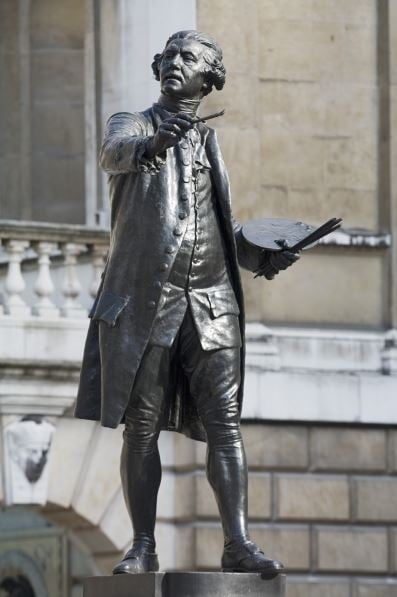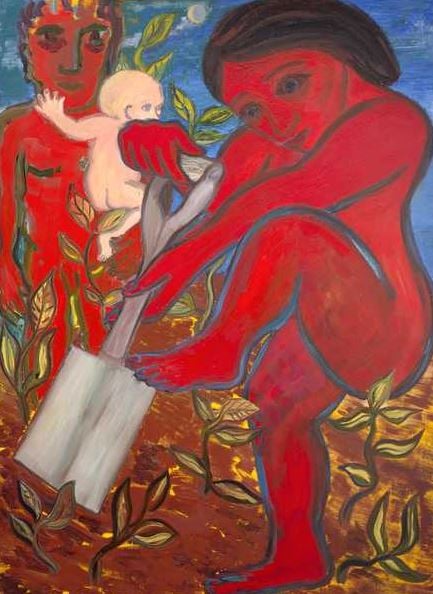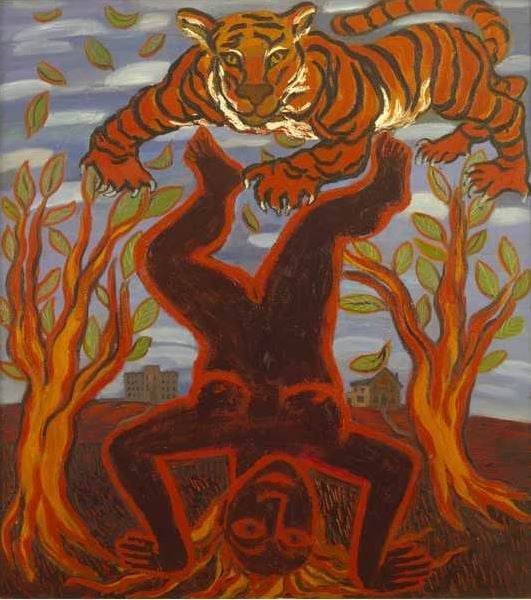
Royals, Rifles and Rivalry: 7 iconic moments in the history of the Royal Academy
In 2018 we will celebrate the 250th birthday of one of Britain’s oldest and most renowned artistic institutions: the Royal Academy of Arts. To mark the occasion, we put together 7 iconic moments that shaped not only the history of the Academy, but also often greatly influenced the development of art in Britain. Read on to find out more about heated rivalry, political battles and recent radical developments inside the RA’s hallowed halls.
With the King’s permission

Portrait of Sir William Chambers (oil on canvas), Joshua Reynolds (1723-92) (studio of) / Private Collection / Photo © Philip Mould Ltd, London
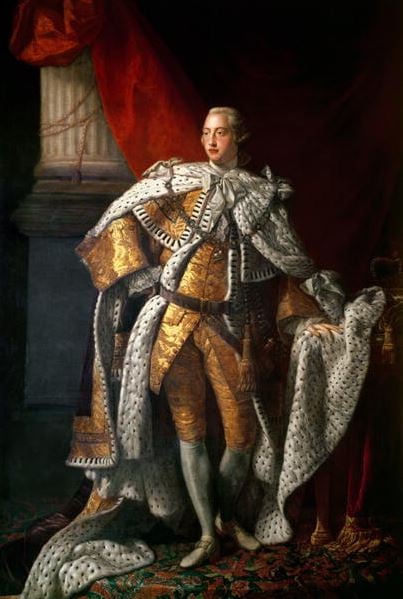
King George III, c.1762-64 (oil on canvas), Allan Ramsay (1713-84) / Guildhall Art Gallery, City of London
On a cold day in the winter of 1768, the architect William Chambers had an audience with King George III. He proposed his idea to found a Royal Academy of arts, to train artists and showcase their works. While the RA is now firmly entrenched in English history, back in the day the idea of creating an artistic institution dedicated not to Old Masters but contemporary artists was relatively new. Noting that similar academies had already been founded in France, the Netherlands and other European states, Chambers convinced the King that an institution of this kind in London would establish a thriving British art scene. Taken with the idea, King George gave permission for the Academy’s foundation. Sir Joshua Reynolds was made its first president, and his statue still graces the courtyard of Burlington House (the Academy’s permanent location since 1868).
A Historic Showdown
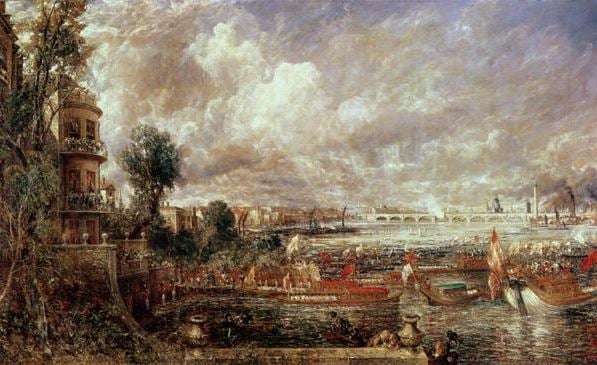
The Opening of Waterloo Bridge, Whitehall Stairs, 18th June 1817 (oil on canvas), John Constable (1776-1837) / Private Collection
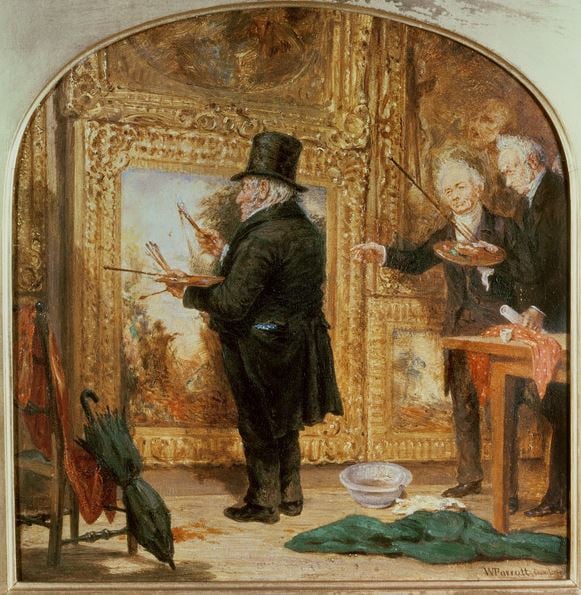
J. M. W.Turner (1775-1851) at the Royal Academy, Varnishing Day (oil on canvas), William Parrott (1813-69) / The Collection of the Guild of St. George, Sheffield, UK
The Academy’s Great Exhibition of 1832 saw the rivalry between two of Britain’s most prominent artists erupt explosively. On Varnishing day prior to the opening of the exhibition, Joseph Mallord William Turner, now known primarily for his seascapes and groundbreakingly loose and expressive brushwork, encountered his contemporary John Constable. Constable was painstakingly adding the final touches to his painting The Opening of Waterloo Bridge, an intricate scene that had taken him 15 years to make. Turner, intent on stealing the show, walked up to his own painting in the exhibition (a small seascape) and casually added a striking red buoy in the middle of his picture. Not happy to have been upstaged by his rival, Constable exclaimed: “He has been here and fired a gun.”
Hacked up Henry
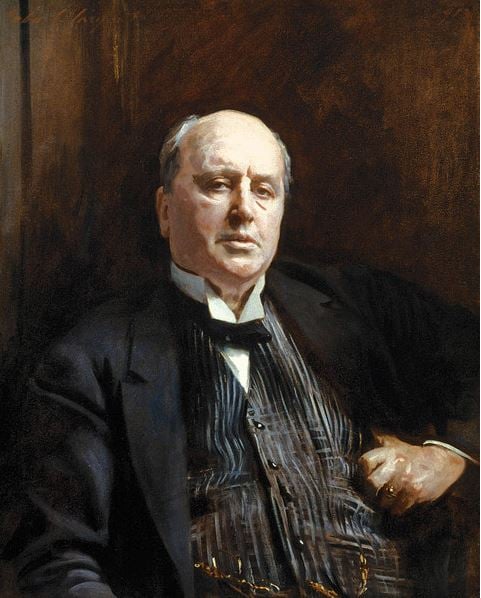
Henry James, 1913 (oil on canvas), John Singer Sargent (1856-1925) / National Portrait Gallery, London, UK / Photo © PVDE
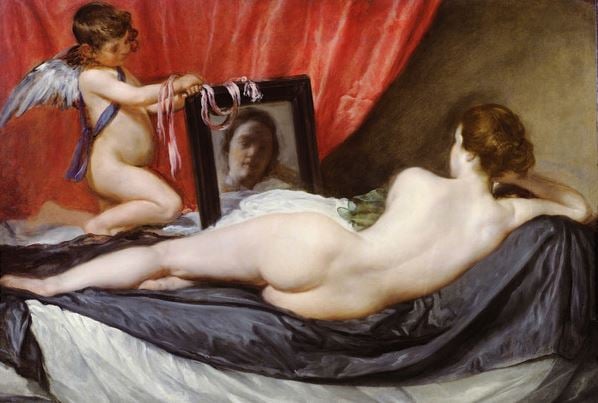
The Rokeby Venus, c.1648-51 (oil on canvas), Diego Rodriguez de Silva y Velazquez (1599-1660) / National Gallery, London, UK
In May 1914, during the heat of the debate over votes for women, suffragette Mary Wood made her way into the RA and attacked John Singer Sargent’s portrait of the writer Henry James, by breaking the glass that protected it and slashing the canvas with a meat cleaver. The attack followed the example of Mary Richardson, who had only a few months earlier (in March of that year) used a meat cleaver to butcher Diego Velazquez’ Rokeby Venus at the National Gallery. The painting was restored and is now in the collection of the National Portrait Gallery.
Joining forces
During the years following Mary Wood’s attack the RA stayed involved with politics, and during the outbreak of the First World War was keen to join the British war effort. According to records sculptors and painters “flung aside” their chisels and brushes to pick up rifles. A group of artist volunteers formed a military group called the “United Arts Force”, and practiced in the courtyard of Burlington House. Furthermore, the Academy also offered space to the Red Cross, who used the site to manufacture supplies to be sent to the front.
A British Sensation
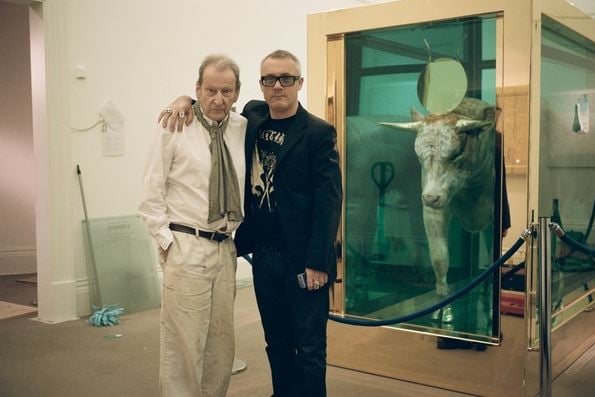
Lucian Freud Damien Hirst with ‘The Golden Calf’ (2008), Sotheby’s, London, 2008 (photo), David Dawson (b.1960)
Fast forward a few decades to the Academy’s more recent history, and to a sensational exhibition sensational that would change the face of the British art world. The exhibition Sensation, held at the Royal academy in 1997, marked the start of the careers of the famous Young British Artists (or YBA’s). The pieces in this exhibition came from the collection of advertising giant Charles Saatchi, and included now iconic artworks such as formaldehyde-preserved animals by Damien Hirst (pictured above with one of our copyright artists, Lucian Freud). For many of these artists Sensation was the first time their works were in the public eye, and launched their successful, influential careers.
Double Trouble
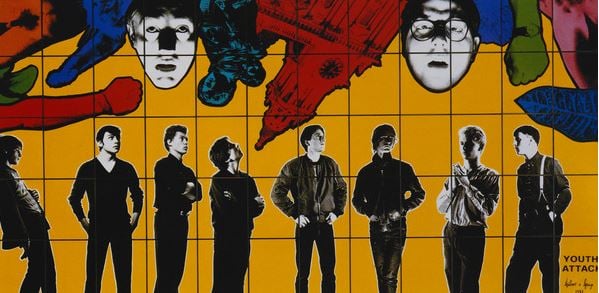
Youth Attack, 1982, 1982 (60 photographs in metal frames), Gilbert and George (b.1943, b.1942) / Private Collection / Photo © Christie’s Images

Gilbert and George, The Singing Sculpture, 1970 (b/w photo), Jorge Lewinski (1921-2008) / Private Collection / © The Lewinski Archive at Chatsworth
At the start of 2017, the Royal Academy saw an election that was the first of its kind in the Institution’s history: an artistic duo was made a Royal Academician, as one artist. The artistic duo Gilbert & George, known for their subversive artworks and their motto “Art for All”, have been making art together since 1967 and were featured in last year’s Summer Exhibition. The theme for that year’s exhibition was in fact “artistic duos”. Perhaps the election of a “two-headed RA” follows this new focus on collaboration and collective practice.
Spotlight on the current Keeper
Let’s now look to the future with a spotlight on our copyright artist Eileen Cooper RA, whose style has been described as a “magical realism”. She will be coordinating the upcoming 2017 edition of the Summer Exhibition. The Summer Exhibition has been held every year, without exception, since 1769. Many traditions surrounding the event have been in place for centuries, from the way the exhibition is curated and hung (all over the wall from top to bottom to showcase as much as possible) to the artists’ procession down Piccadilly on Varnishing day, which is led by a steel band.
The responsibility to coordinate this historic exhibition is a tremendous honour on its own, but Eileen Cooper also happens to be the first ever elected female Keeper of the Royal Academy. Though brimming with tradition, the RA has certainly moved with the times. Catch this year’s edition of the exhibition at the RA between 13 June and 20 August. At Bridgeman we represent a number of Royal Academicians, find out more about them and their work on our copyright page.
Like what you see? Get in touch with your local Bridgeman office for any image research or licensing queries:
North and South America: nysales@bridgemanimages.com

